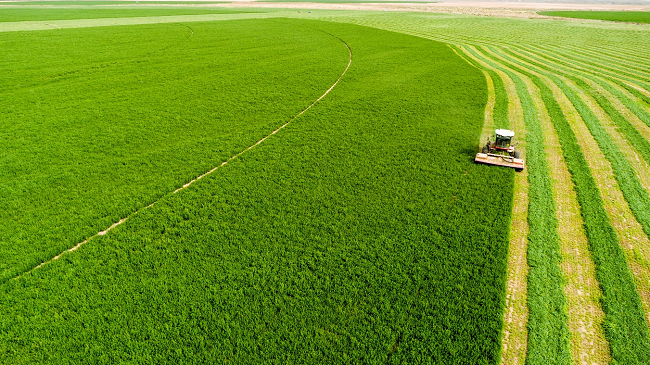A United Nations Convention to Combat Desertification (UNCCD) COP15 side event was held in Abidjan, Côte d'Ivoire on May 16.
The main event focused on the issue of land desertification and provided suggestions for sustainable development of the Earth.
At the side event, Ningxia Baofeng Group's innovative project integrating solar energy and modern agriculture was shown to representatives from all over the world as an example of Chinese enterprises participating in desertification control.
Combining carbon neutrality with desert governance, Baofeng Energy Group provides innovative desertification governance and climate change solutions for the rest of the world.
Since 2013, on the east bank of the Yellow River and the edge of the Maowusu Desert in Yinchuan, Baofeng Group started the sustainable ecological restoration of 160,000 mu (about 54,753 hectares) of desertification land.

Farmers plow the land to grow crops. [Photo provided to chinadaily.com.cn]
It improved the soil by planting alfalfa on the leveled land, upgraded irrigation infrastructure, and diverted water from the Yellow River to the fields.
Meanwhile, it planted optimal cash crops such as goji berries, alfalfa, economic forest and herbs over a total area of more than 10,000 mu.
The region's vegetation coverage has increased from less than 30 percent to 85.1 percent due to the sustainable ecological governance, and has become an oasis.
In 2015, relying on abundant sunlight resources, Baofeng Group constructed the world's largest monocrystalline silicon smart photovoltaic power station on the ecologically restored land.
The power plant has an installed capacity of 1GW, and covers an area of 30,000 mu. It initiated the"solar and agriculture integration" industrial model.
It is reported that the plant applied intelligent light-chasing technology, realizing power generation 20 percent higher than that of traditional solar devices.
The annual green power generation reached 1.7 billion kWh, saving 557,000 tons of standard coal equivalent, and eliminating 1.693 million tons of emissions of carbon dioxide, which was equivalent to planting 90 million trees.
At the same time, the solar panels can help reduce water evaporation by 70 percent, further promoting ecological restoration and improving the regional climate.
The innovative model has also increased local employment. Local farmers were trained as skillful industrial workers, which now brings each rural household additional income of 40,000 yuan (nearly $6,000).
In China, more enterprises are participating in desert governance by using innovative revitalization models.